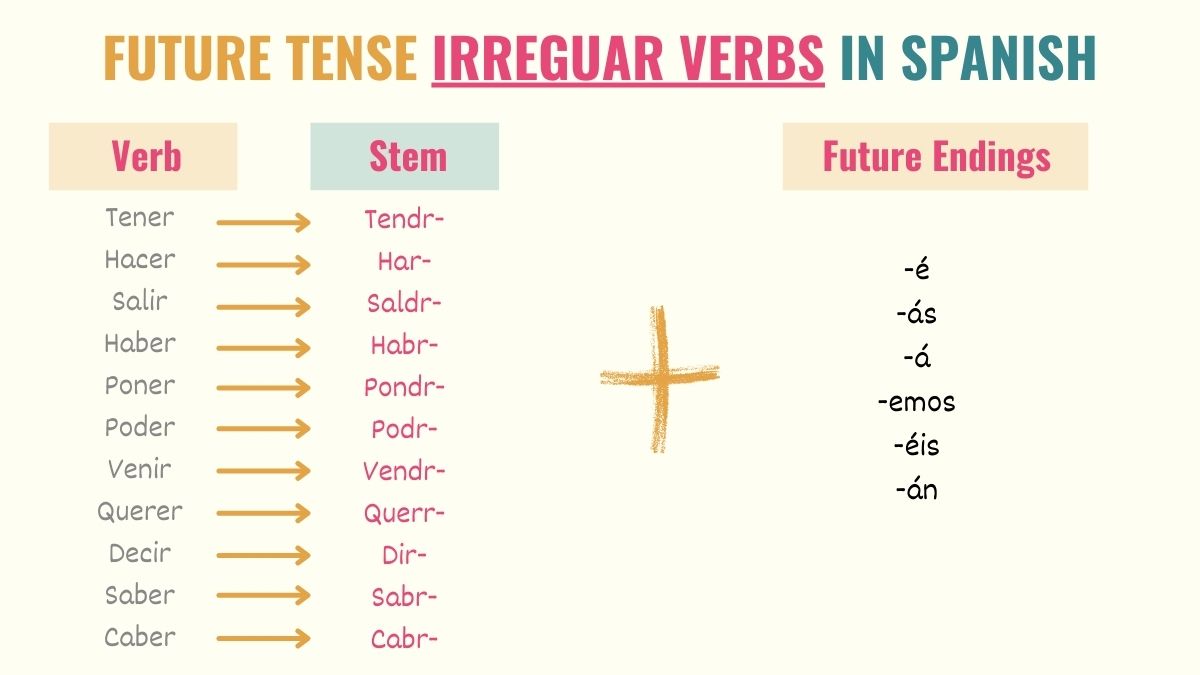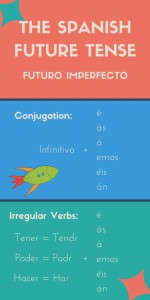
She will want to have dinner in an expensive restaurant. I'll tell you the joke after the commercial. Future tense and irregular stems decir (to say, to tell) dir- hacer (to make, to do) har- poder (to be able to) podr- poner (to put) pondr. Yo te diré el chiste después del anuncio. Juan Carlos won't do his homework tonight. Also notice that in the case of querer we're getting an extra "r" which means you'll have to roll your tongue. But in other cases we're actually gaining (strange) letters.
#FUTURE TENSE ENDINGS SPANISH FULL#
These verbs don't use the full infinitive but rather have shortened stems (to which we attach the regular endings).Īs you can see, in many cases we're shortening the stems by ditching a vowel. There are about a dozen irregular future tense verbs you should know. The infinitive endings are -are, -ere and -ire in Italian, and -ar, -er and -ir in Spanish. Note: The verb satisfacer (to satisfy) follows the pattern of hacer: satisfaré, satisfarás, etc. In both languages, there are three main conjugations. It becomes habrá which means "there will be." Note: The verb haber is also irregular in the future. OK, but what if you want to speak explicitly about the future without resorting to these tricks? Use the future tense.

You can actually use the present tense to talk about future events, especially if they're going to happen soon. We do pretty much the same thing in English. Just conjugate ir in the present tense and add an "a" and then an infinitive: You can use the construction ir + a + infinitive to refer to the future.

Before we discuss the future tense, let's look at a couple of ways to talk about the future without the hassle of learning new conjugations.


 0 kommentar(er)
0 kommentar(er)
